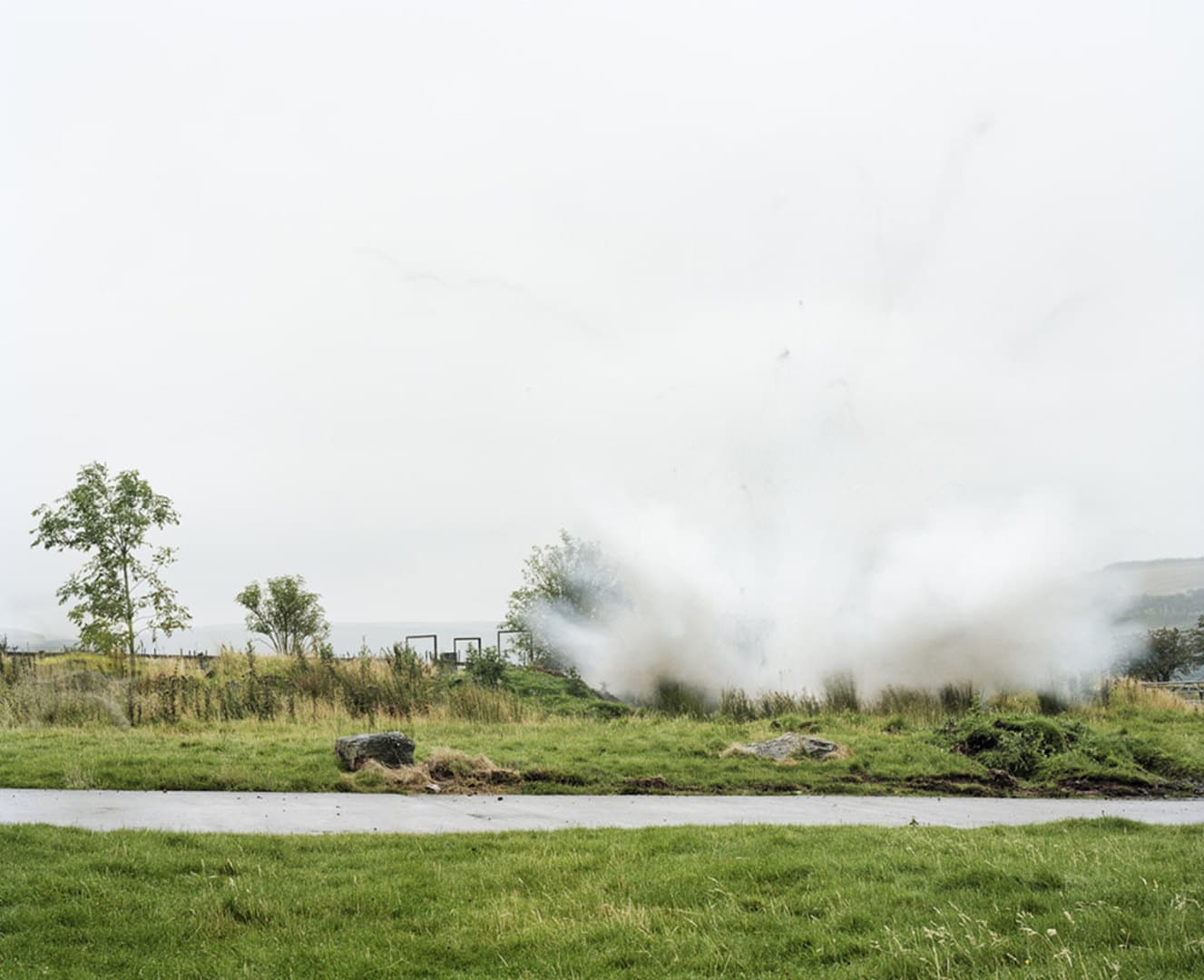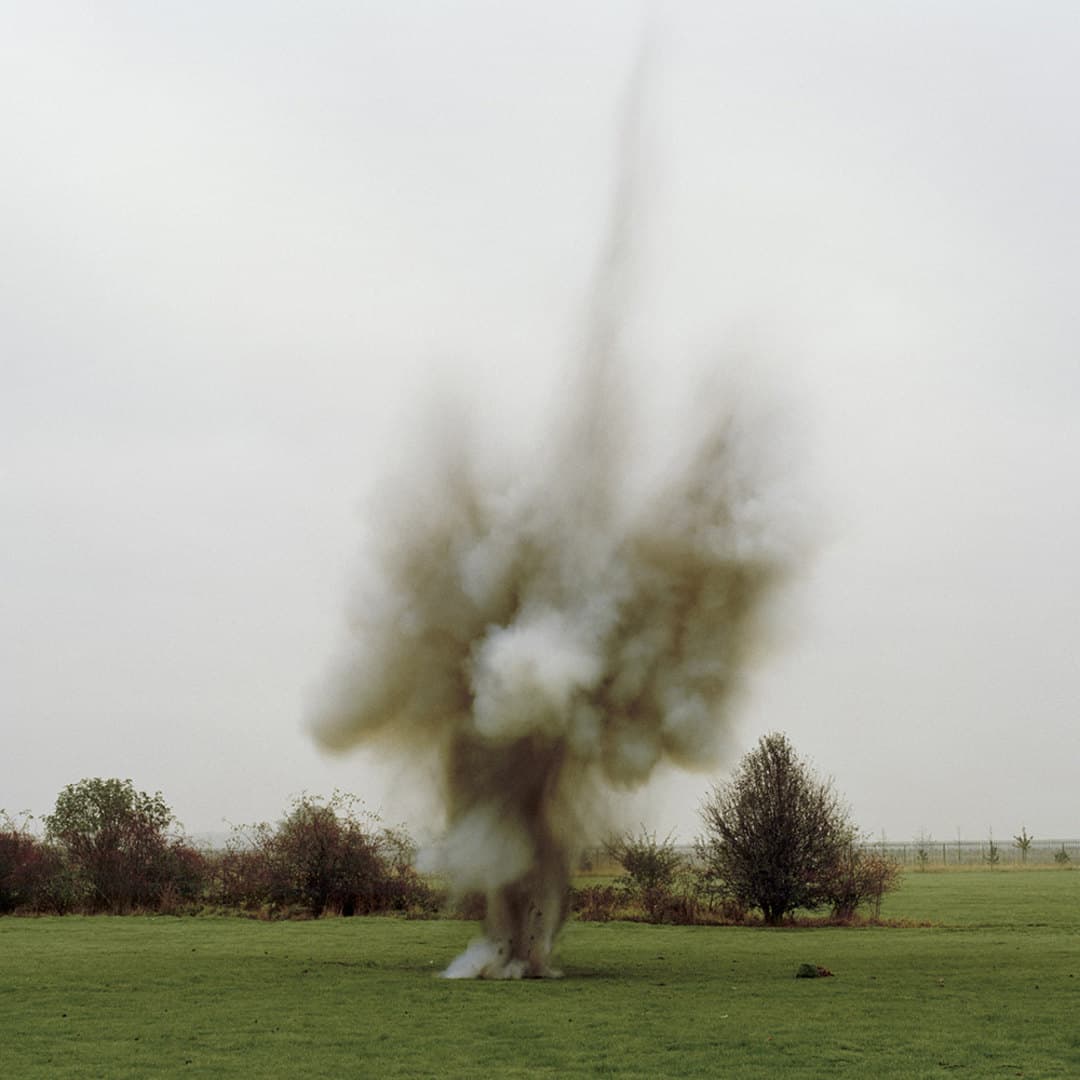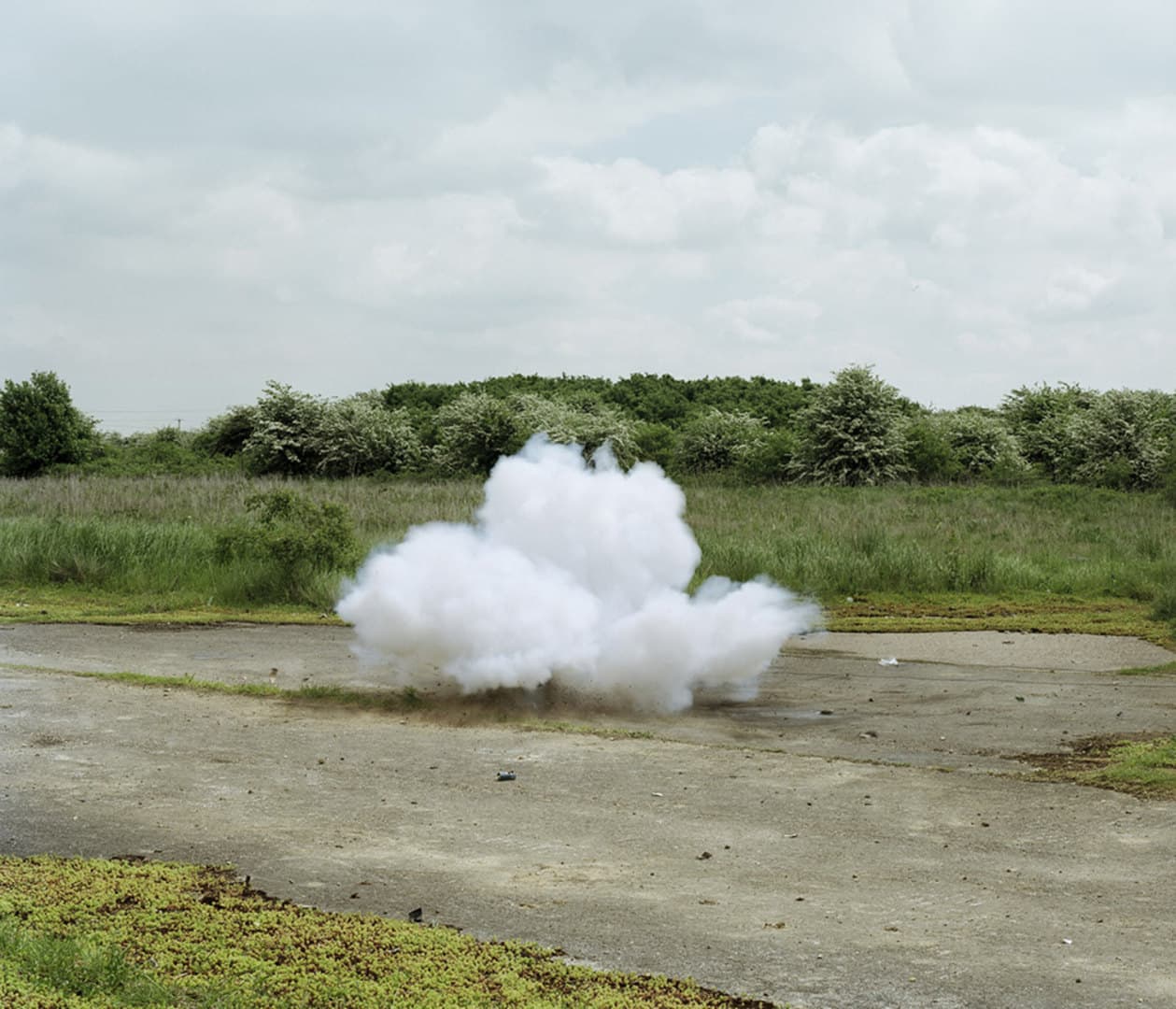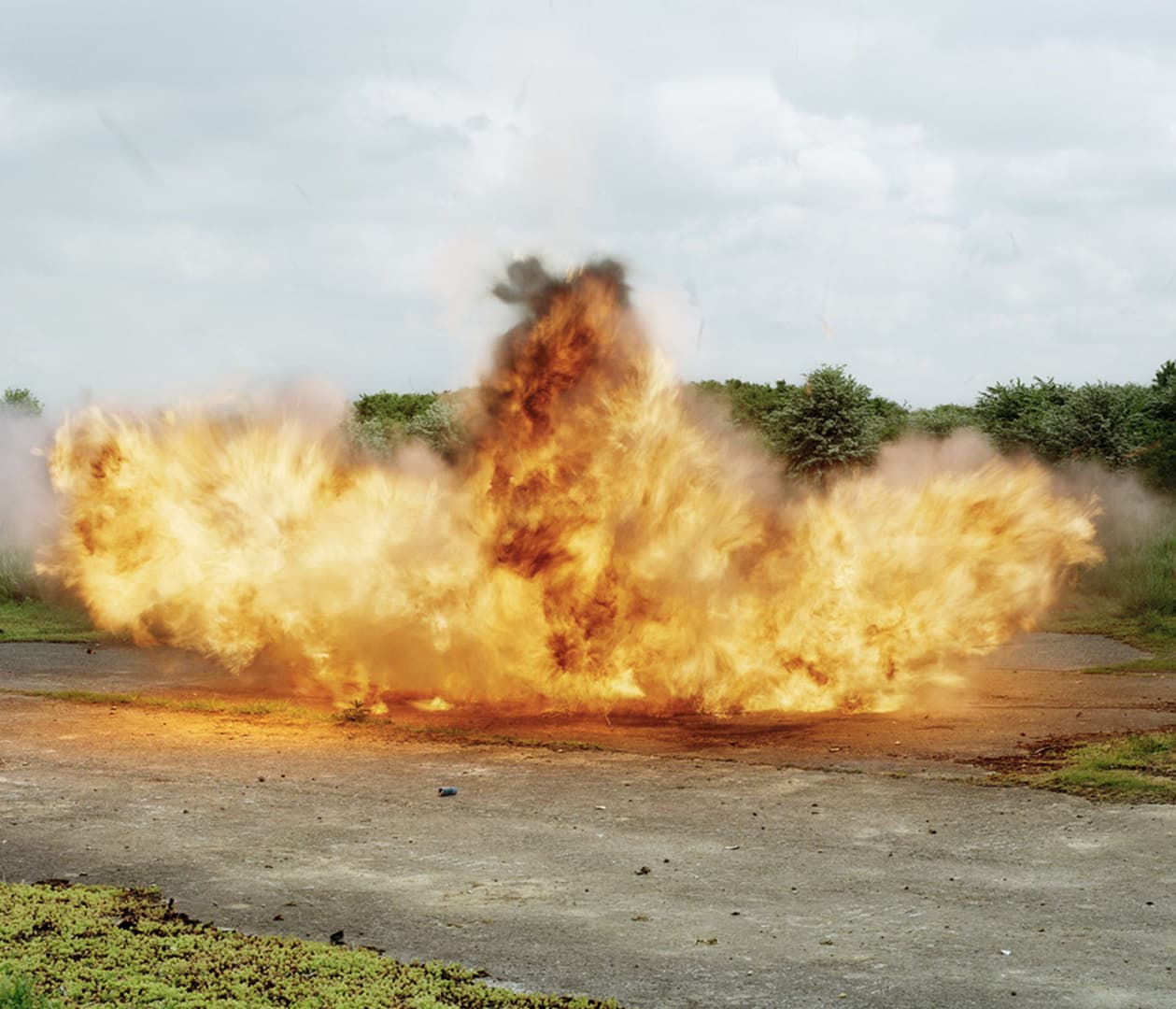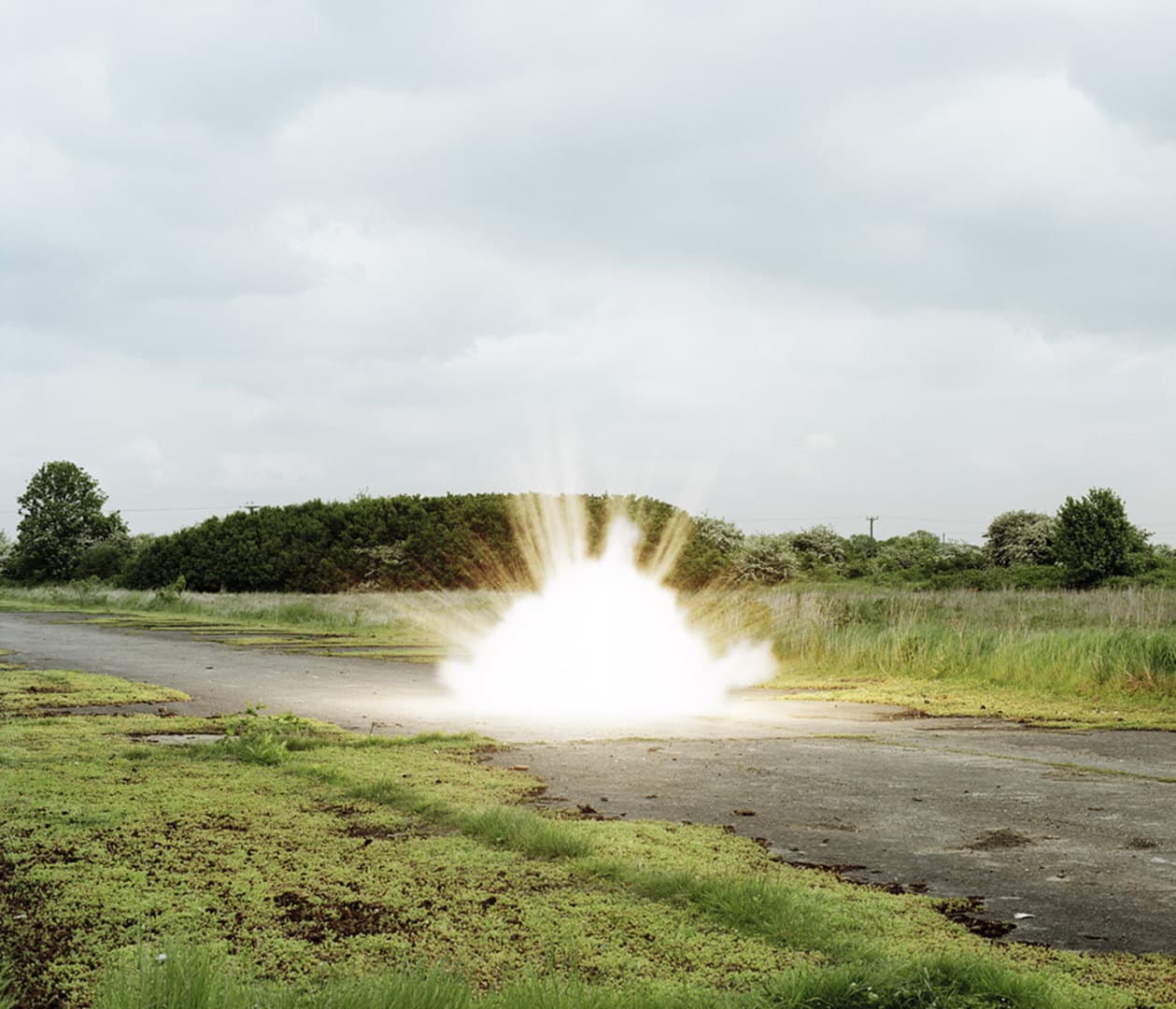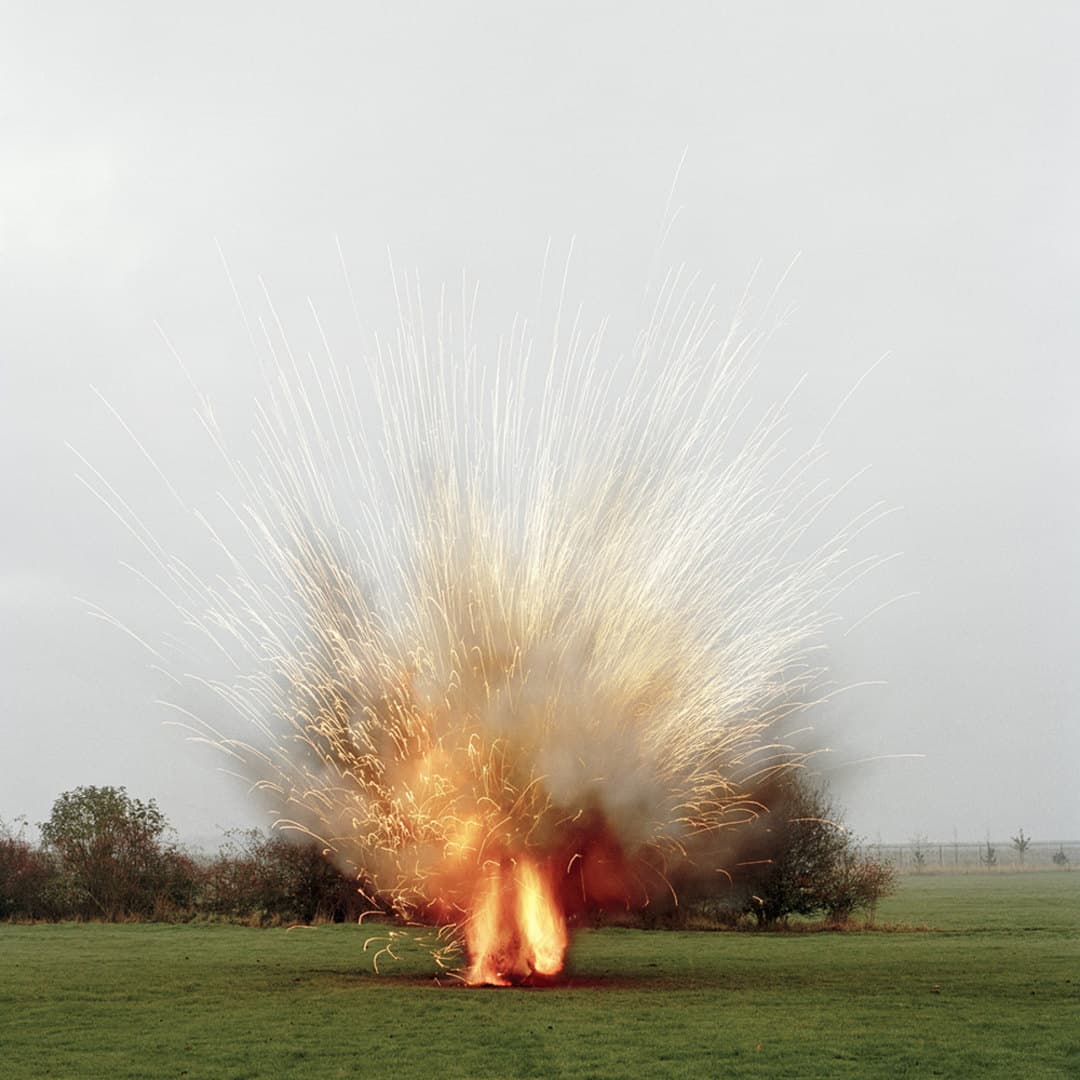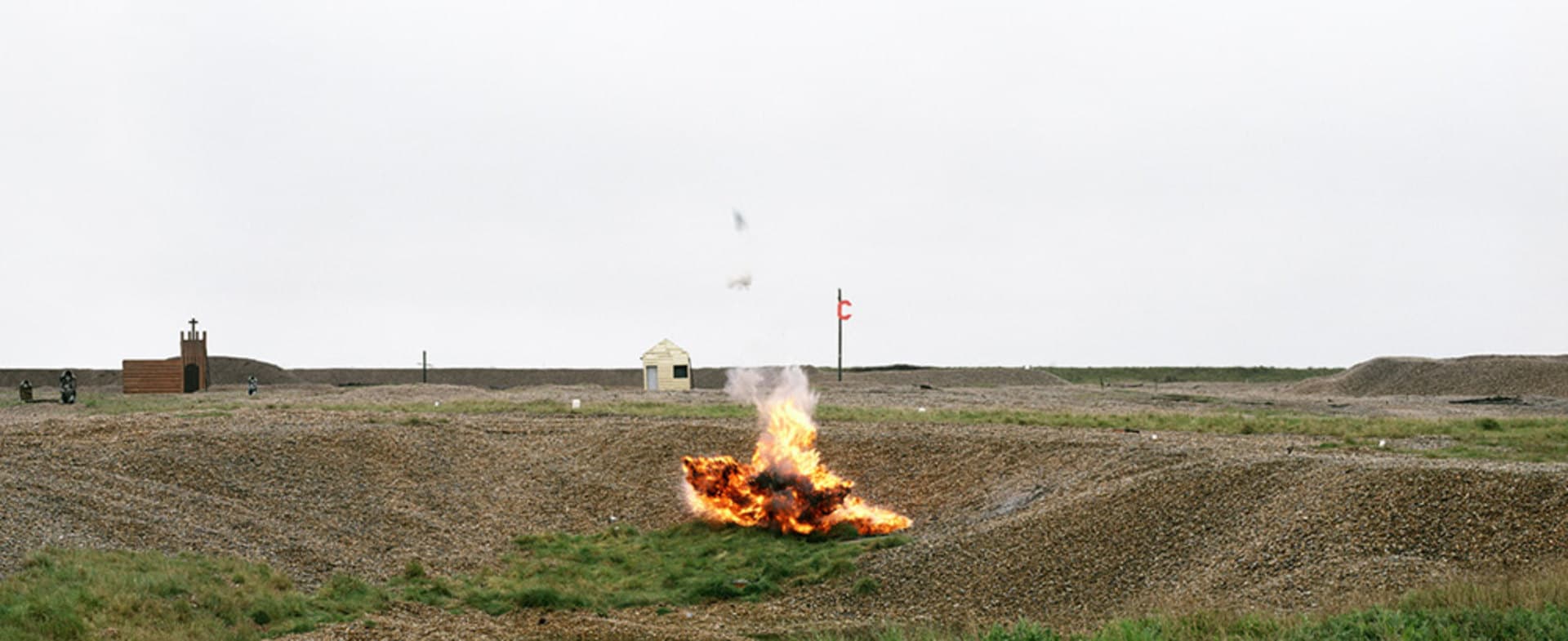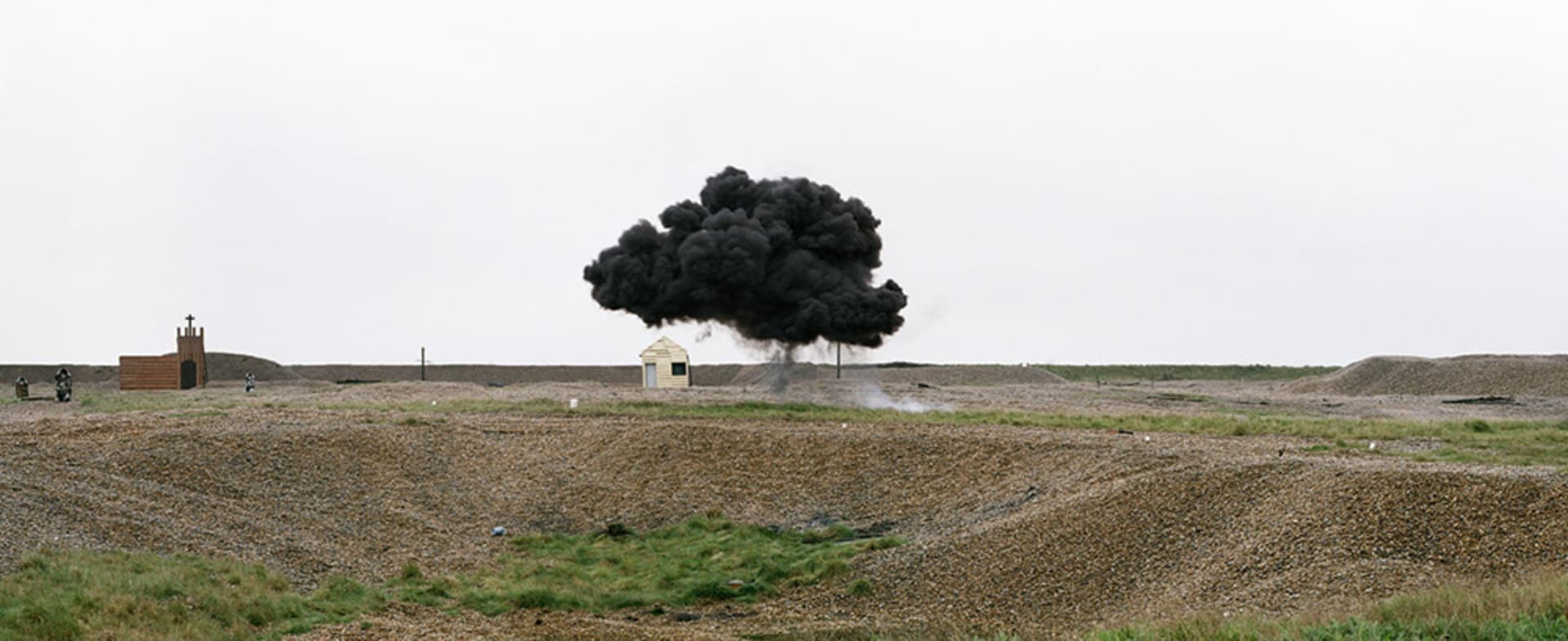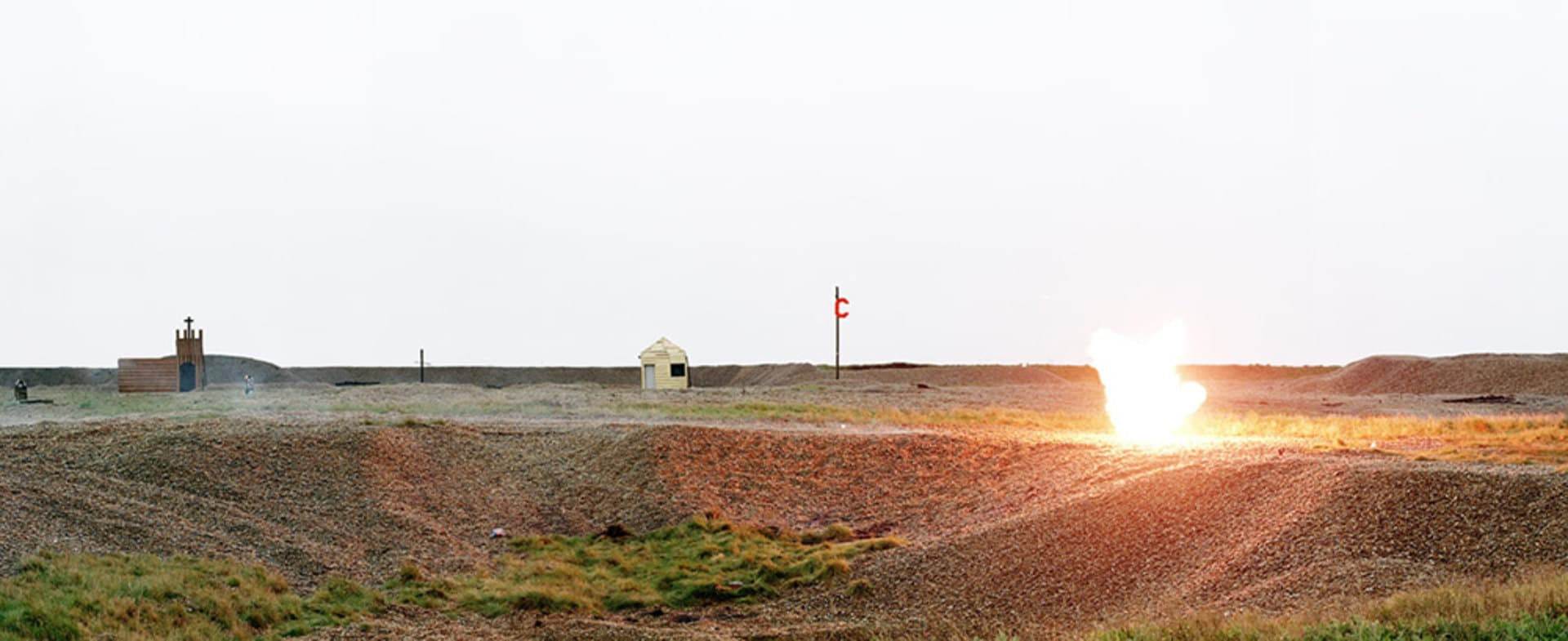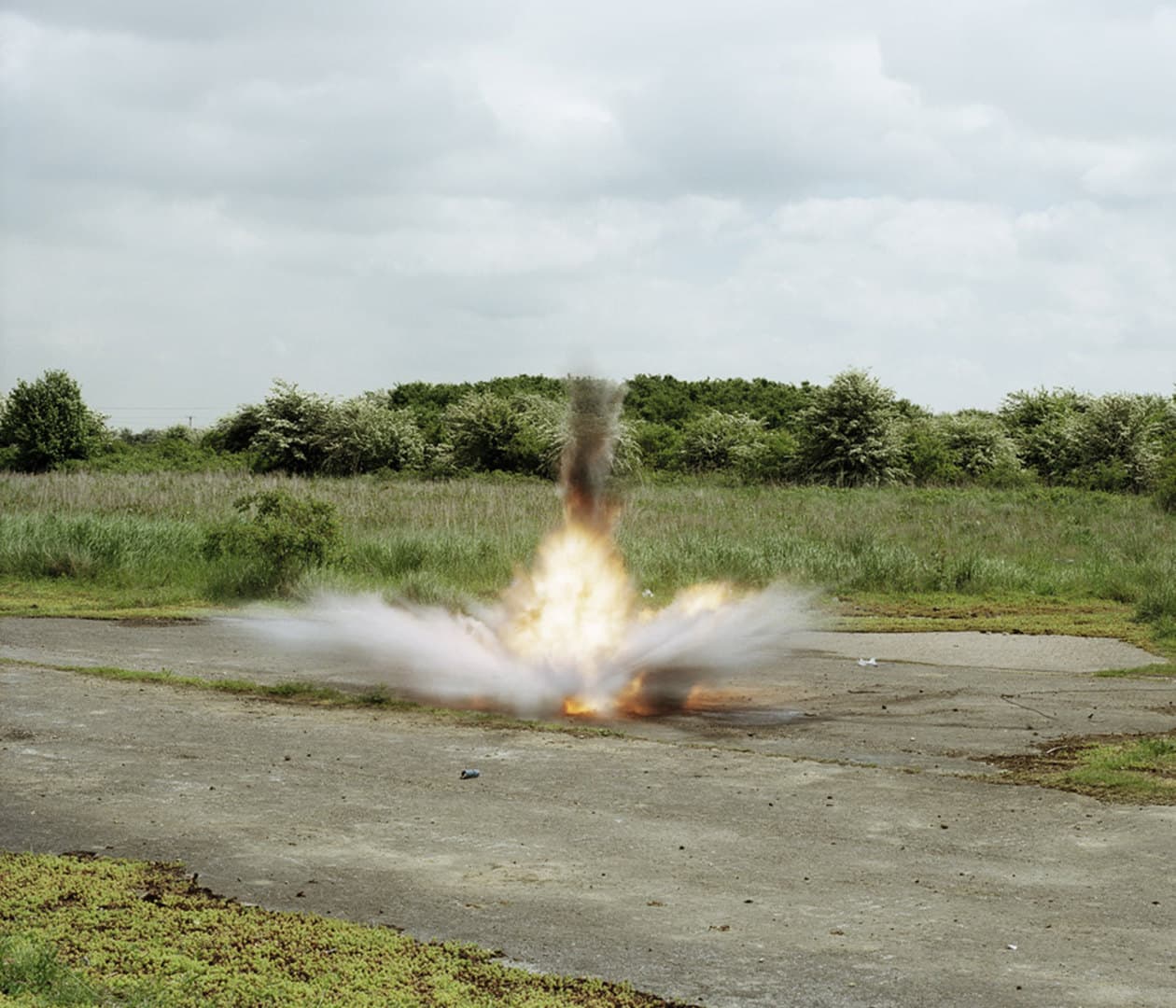The Explosion pictures document the literal theater of war – the detailed level of artifice used to prepare men and women for combat on the front lines. They also reveal the minutiae of packaging war as entertainment. The beauty of the pictures lies in their perverse seductiveness, and this attraction underscores the distance most of us have from real combat.
Karen Irvine, ‘Incident Control’ in Sarah Pickering, Explosions, Fires and Public Order
The simulation pyrotechnic industry has rapidly expanded over the last few years: atrocious acts have happened in conflict throughout history, yet training in recent times has had to become more and more realistic to psychologically prepare our forces for the worst. Police and soldiers who have grown up playing computer games and seeing ever more spectacular special effects in films are simultaneously disconnected from and situated closer to the “real.” These photographs, which depict pyrotechnic explosions used by British police and military instructors to intensify the sense of drama and tension in training exercises, are part of a series taken at test sites in the English countryside where the bursts of light, flames, sparks, and smoke sit incongruously in the rural environment.
Whether real or artificial, we enjoy looking at explosions and, as an artist I’m of course fascinated by their visual seductiveness. I’m also interested in the forms of violence they represent, in our relationship to them, and in identifying the imaginative references they instantiate.
With names like “Artillery,” “Groundburst,” and “Napalm,” the pyrotechnics evoke not only violent and destructive events from wars and conflicts, but also the dramatic re-enactments of such events familiar from feature films or war documentaries. Witnesses to extreme situations often describe what they saw as being “like a film,” and modern filmmakers use CGI and special effects to conjure the most realistic possible disasters to entertain viewers. Indeed, one of the pyrotechnic manufacturers was also responsible for making explosive effects for James Bond and war films.
By using photography to record a simulated or imagined scene, I am creating a document that is already a departure from reality. Moreover, most of the photographs in this series were in fact taken during manufacturers’ demonstrations for military and police shopping trips rather than during training itself—in this sense, the images represent artificial instances of artificial explosions, packaged here as “product.” Both cataloguing and decontextualizing the explosions they depict, these photographs permanently suspend them in a tranquil and contemplative moment. The image of a past event hovers between “then,” “now,” and “what might be”; what should be a decisive moment is confounded.

